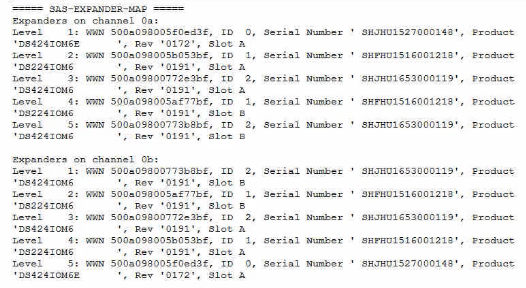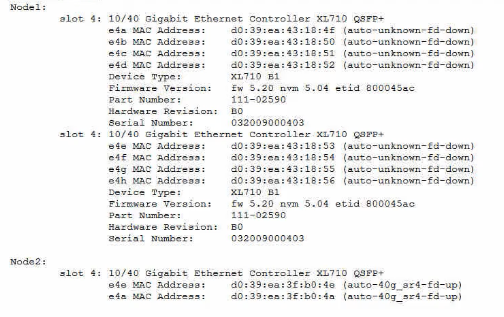Curious about Actual NetApp NCSE (NS0-593) Exam Questions?
Here are sample NetApp certified support engineer - ONTAP specialist (NS0-593) Exam questions from real exam. You can get more NetApp NCSE (NS0-593) Exam premium practice questions at TestInsights.
After expanding a two-node AFF A300 cluster with two AFF A700 nodes, you observe latencies when data is accessed indirectly. The system node run -node -command netstat command shows retransmits and packet drops on the LIFs. The AFF A700 nodes with 40 Gbps and the AFF A300 connect with 10 Gbps to the cluster interconnect. You are using Cisco Nexus 3132Q cluster interconnect switches. You just updated to ONTAP 9.8 software.
In this scenario, what is causing this problem?
Correct : A
The Cisco Nexus 3132Q cluster interconnect switches support both 10 Gbps and 40 Gbps cluster ports, but they have a shallow buffer size of 9 MB per port, which can be easily overwhelmed by the bursty traffic generated by the speed mismatch.
Alternatively, you can use QoS policies to limit the bandwidth of the cluster ports to avoid oversubscription and congestion on the cluster interconnect.Reference:
1: Cluster network cabling, ONTAP 9 Documentation Center
2: Cluster Network Latency - Troubleshooting Guide, NetApp Knowledge Base
3: AFF A300 Tech Specs, NetApp
4: AFF A700 Tech Specs, NetApp
[5]: Why do network speed mismatches create problems with shallow buffered switches?, NetApp Knowledge Base
[6]: How to use QoS to limit the bandwidth of cluster ports, NetApp Knowledge Base
Start a Discussions
You are trying to deploy a Connector in the AWS cloud from NetApp Cloud Manager. The deployment fails and shows the message 'Insufficient permissions to deploy Cloud Connector". You have verified the AWS access key and the AWS secret key.
In this scenario, what Is the reason that the deployment failed?
Start a Discussions
Your customer added a new DS4246 shelf to their FAS2750 single-node system and created a new aggregate on the new shelf. Two weeks later, they log into Active IQ and discover the Medium Impact error shown below.
Shelves with both connections via the same SAS path detected

Referring to the exhibit, which statement is correct?
Start a Discussions
You notice poor performance on your FlexGroup and execute the system node run -node * flexgroup show command for more Information. You notice the "Urge" column has non-zero values.
In this scenario, which statement is true?
Start a Discussions
A customer wants to connect a NetApp AFF A700 system to a 40GbE switch. The controllers have a 10/40G Ethernet card in slot 4 for this purpose. The link comes up fine on node 2, but it will not come up on node 1. You look at the AutoSupport data for the nodes in question and see the output shown in the exhibit.

What is the cause of the customer's problem?
Start a Discussions
Total 60 questions